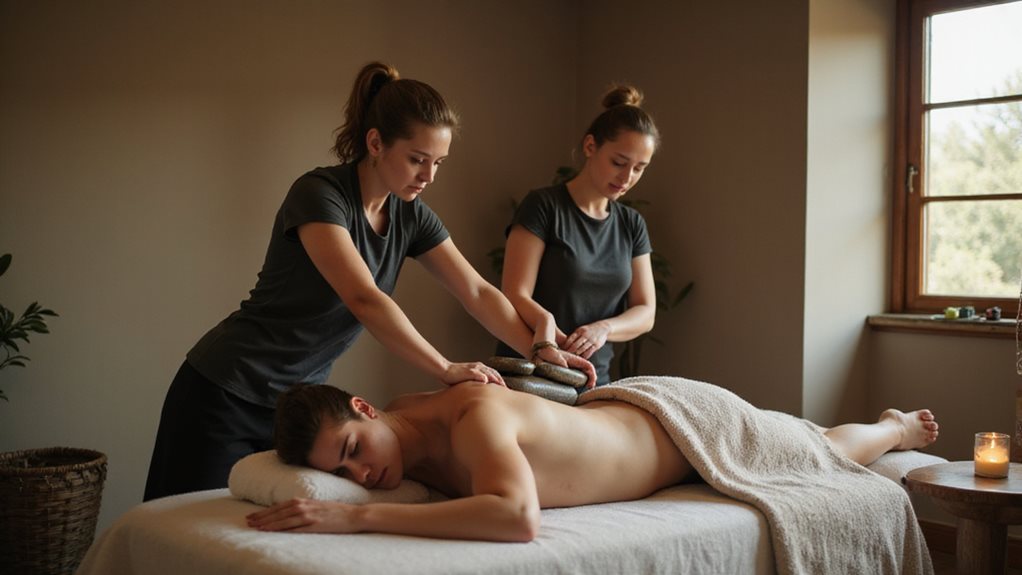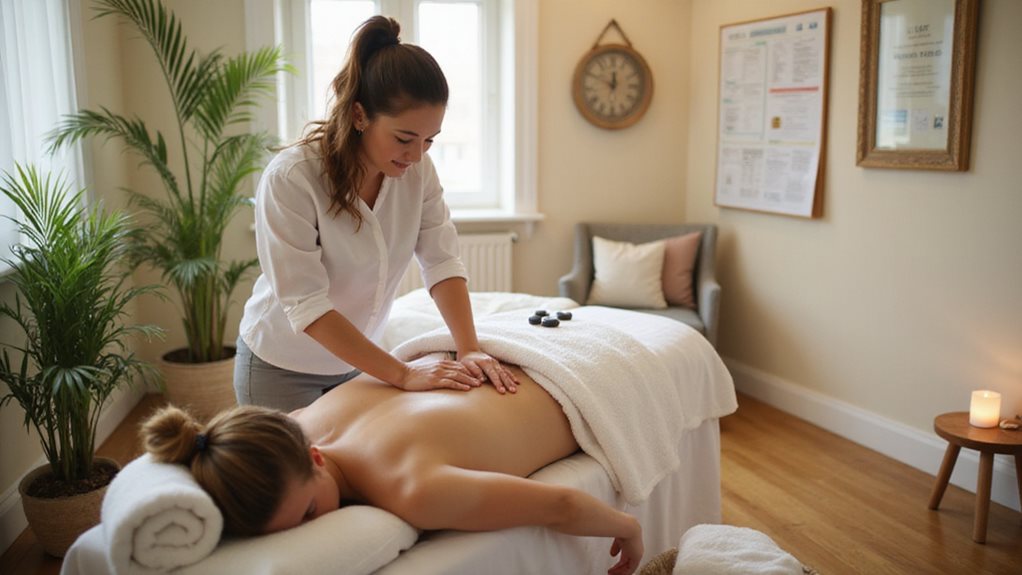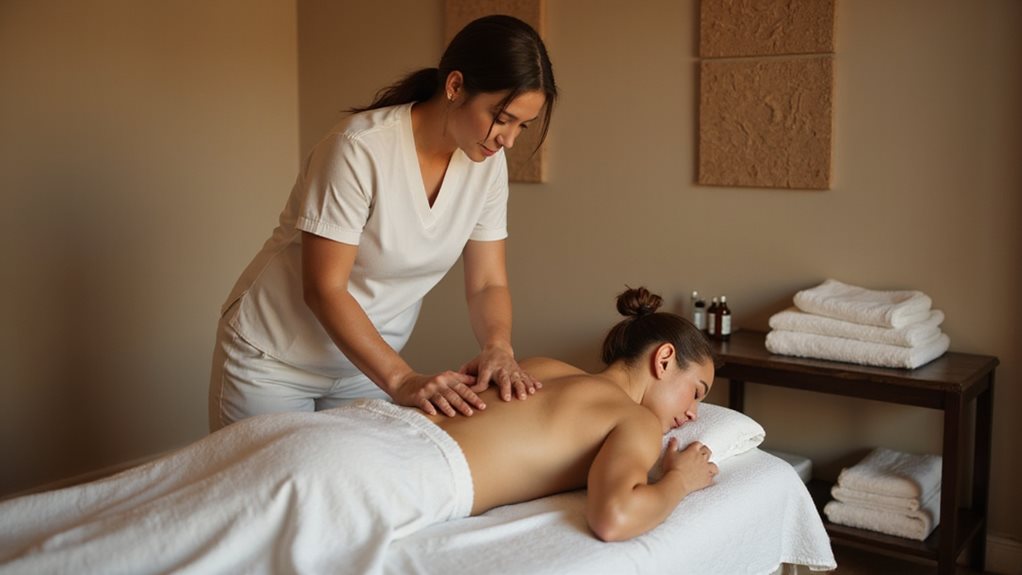Local massage therapists offer a valuable approach to pain relief, employing focused techniques to address personal needs. Research highlights their role in reducing pain intensity and improving mobility for diverse conditions. Their hands-on methods provide a nonpharmacologic alternative, often yielding quicker recovery.
Yet, the full scope of their impact on chronic pain and general well-being remains intriguing, inviting further exploration into their tailored benefits.
Key Takeaways
- Local massage therapists offer tailored sessions for effective pain relief and stress management.
- Verify therapist credentials and licensing for safe, professional pain relief services.
- Discuss health concerns with therapists to customize pain relief techniques.
- Choose facilities with strict sanitation protocols to ensure safety during sessions.
- Expect personalized consultations to address specific pain areas and needs.
Understanding Pain Relief Through Massage
Many people seeking relief from pain turn to massage therapy as a proven method to address discomfort and promote healing. This approach works by attenuating inflammatory responses, reducing nerve sensitization, and elevating endorphins for immediate pain relief. It also disrupts pain signal transmission to the brain, offering a sense of ease that many in the community seek.
For those exploring options, local massage therapists for pain management provide targeted techniques like acupressure and trigger point therapy. These evidence-based practices improve muscle compliance and relax tense tissues through mechanical pressure. By integrating with biomedical approaches, massage aligns with current pain management trends, fostering recovery and a shared expedition toward wellness among those aiming for relief together.
Research highlights that massage effectively relaxes painful muscles, providing significant therapeutic benefits for conditions like back and neck pain.
Benefits of Massage for Chronic Conditions

Massage therapy offers significant potential for managing persistent pain, especially in chronic conditions like low back pain and fibromyalgia, where studies report notable reductions in pain intensity. Different clinical findings also suggest that massage enhances daily comfort by improving mobility and sleep quality and reducing reliance on pain medications. Research continues to investigate these benefits, aiming to solidify massage as a valuable tool for long-term pain management and general well-being.
Additionally, regular massage sessions are crucial for maintaining pain relief and preventing symptom flare-ups in conditions like fibromyalgia. Regular massage is vital.
Managing Persistent Pain
While chronic pain affects over 50 million adults in the U.S. daily, emerging research highlights the potential of massage therapy as an effective tool for managing persistent discomfort. This non-invasive approach offers a sense of relief and connection for those seeking alternatives to traditional treatments.
Key benefits of massage for chronic conditions include:
- Pain Reduction: Moderate evidence shows it alleviates intensity in conditions like fibromyalgia and Arthritis (SMD −0.44 vs. sham).
- Physiological Impact: Improves circulation and reduces inflammation, aiding tissue repair.
- Mental Health Support: Considerably lowers anxiety (SMD −0.57) and improves mental well-being.
For many, massage provides a safe, enabling option to address persistent pain, fostering a supportive path to better living within a caring community. Recent studies also suggest that massage therapy can play a vital role in multidisciplinary pain management plans, integrating with other therapies for comprehensive care.
Enhancing Daily Comfort
As chronic pain continues to challenge countless people, massage therapy emerges as a valuable strategy for improving daily comfort across diverse conditions. For those with fibromyalgia, it reduces pain, stiffness, and anxiety while improving sleep through muscle relaxation. People with neck and low back pain benefit from longer, frequent sessions that will enhance mobility and reduce tension.
People living with Arthritis find relief in diminished pain and better functionality, with effects lasting up to a month. Carpal tunnel syndrome patients experience decreased nerve pain and improved hand function, often reducing reliance on medication.
Furthermore, massage improves sleep quality, which is essential for pain recovery, and mitigates daytime fatigue. This supportive therapy offers a sense of relief and connection for many seeking to manage chronic conditions effectively. Additionally, massage therapy enhances overall well-being by promoting relaxation and improving circulation.
How Massage Supports Post-Surgical Recovery
Massage therapy plays a significant role in post-surgical recovery by reducing reliance on opioids through natural pain relief mechanisms, such as the release of endorphins. It also supports mobility recovery by maintaining joint flexibility and addressing muscle atrophy during periods of limited movement. Research indicates that these benefits help patients regain function more quickly and with less dependence on pharmaceutical interventions.
Additionally, it minimizes pain and discomfort by promoting muscle relaxation during the healing process.
Reducing Opioid Dependency
Given the escalating concern over opioid dependency, particularly among post-surgical patients, massage therapy emerges as a promising adjunct in pain management strategies. Research highlights its potential to reduce reliance on opioids by targeting somatic pain sources and supporting multimodal care approaches, fostering a sense of community in recovery experiences. Additionally, healthcare professionals recognize the importance of integrating nonpharmacologic therapies like massage to mitigate addiction risks.
Key benefits include:
- Pain Score Improvement: Studies show a clinically meaningful 2-point reduction in worst pain scores for opioid-dependent persons.
- Short-Term Opioid Decrease: Temporary reductions in opioid use, up to 25%, are noted, though effects may wane within weeks.
- Self-Efficacy Enhancement: Better outcomes occur when patients believe in achievable pain relief.
Though challenges like temporary benefits persist, massage offers a valuable, inclusive tool for managing post-surgical pain without escalating opioid use.
Enhancing Mobility Recovery
People recovering from surgery often face challenges with mobility due to stiffness, pain, and scar tissue formation. Massage therapy offers a supportive path to recovery by addressing these barriers. Techniques like deep tissue massage and myofascial release reduce muscle tension and remodel scar tissue, while effleurage enhances circulation to aid healing. Lymphatic drainage minimizes swelling, and tailored stretching restores joint flexibility, fostering a sense of progress and community in recovery.
Additionally, massage promotes the release of natural painkillers, helping to alleviate discomfort during the healing journey.
| Massage Technique | Recovery Benefit |
|---|---|
| Deep Tissue Massage | Breaks up muscle adhesions |
| Lymphatic Drainage | Reduces post-operative swelling |
| Gentle Stretching | Improves joint range of motion |
Through these methods, local massage therapists help people regain movement and ensure they feel supported in their healing process.
Addressing Sports Injuries With Local Therapists
How can athletes effectively manage and recover from sports injuries in their local communities? Local massage therapists offer focused solutions that support athletes in their recovery process, fostering a sense of connection and care within the community. Research highlights their role in accelerating healing and enhancing performance through advanced techniques. Studies also show that massage can provide small but significant improvements in flexibility scores.
Key benefits of working with local therapists include:
- Post-Injury Tissue Repair – Increased blood flow aids muscle recovery and reduces soreness.
- Chronic Pain Management – Effective for ongoing injuries like knee pain, often paired with stretching.
- Return to Sport Acceleration – Supports safe reintroduction of movements via motor re-education.
Managing Fibromyalgia Symptoms With Touch Therapy

Beyond the domain of sports injuries, local massage therapists also play a crucial role in supporting people with fibromyalgia, a chronic condition characterized by widespread pain and heightened sensitivity. Research shows that massage therapy, when administered for at least five weeks, considerably reduces pain (SMD 0.62), anxiety (SMD 0.44), and depression (SMD 0.49) in patients. Modulating serotonin levels and suppressing H-reflex response addresses central pain sensitization and spinal hypersensitivity.
Improved circulation lowers inflammatory markers, while tailored pressure adjustments prevent discomfort. Extended treatment plans and self-massage education enable persons within a supportive community. Additionally, regular massage sessions can enhance sleep quality, improving rest duration, which is often disrupted in fibromyalgia patients.
Backed by meta-analyses and clinical trials, touch therapy offers a reliable, evidence-based approach to managing fibromyalgia symptoms. It fosters both physical relief and psychological well-being.
Easing Arthritic Discomfort Through Targeted Techniques
Numerous people with Arthritis find significant relief through targeted massage techniques tailored to their specific needs. When applied by skilled therapists, these methods can reduce pain, improve flexibility, and ease stiffness by enhancing blood flow and releasing tension around affected joints. Gentle approaches are prioritized during flare-ups to avoid aggravating inflammation, ensuring safety and comfort.
Key techniques often employed include:
- Swedish massage – Utilizes long strokes to improve circulation and reduce joint soreness.
- Hot stone therapy – Applies heated stones to relax muscles and decrease stiffness.
- Moderate pressure – Stimulates pain-relieving receptors without worsening inflammation.
Such therapies offer a drug-free path to managing discomfort, fostering a sense of well-being, and connecting through customized care adapted to personal tolerances. Doctor consultations are recommended before starting massage therapy to ensure it suits individual health conditions.
Why Choose Local Massage for Wellness
While many wellness options exist, choosing local massage therapy offers distinct advantages for maintaining general health and well-being. Local therapists often understand community-specific stressors, tailoring sessions to address regional needs like occupational strain. With 11.1% of U.S. adults using it annually, it’s a trusted practice for stress relief and proactive health maintenance, particularly in urban and coastal areas with high accessibility.
Notably, 62% of consumers sought health benefits through massage for conditions like soreness or chronic pain in the last 12 months.
The following table highlights key reasons to opt for a local massage:
| Benefit | Community Impact |
|---|---|
| Customized Care | Therapists adapt to local lifestyle needs |
| Accessibility | Easier access in urban tourist regions |
| Stress Relief | Addresses region-specific tensions |
| Wellness Integration | Aligns with local holistic practices |
This fosters a sense of belonging while supporting mind-body balance.
Safety Tips When Seeking Massage Services

When seeking massage services for pain relief, people should prioritize verifying the credentials of local therapists to guarantee they are licensed and trained in safe practices. It is just as vital to openly discuss any health concerns or medical conditions with the therapist before a session to tailor the treatment appropriately. Taking these initial steps helps establish a foundation of trust and safety for a practical therapeutic experience.
Additionally, ensure that the therapist follows proper sanitation protocols to prevent infection risks.
Check Therapist Credentials
How can one guarantee safety when seeking massage services for pain? Verifying a therapist’s credentials is a crucial step for anyone wanting to join a community of informed wellness seekers. Verifying qualifications protects against unqualified practitioners and fosters trust in the healing process.
Consider these fundamental checks for credential validation:
- Licensing: Confirm the therapist holds a state-required license, often involving 500-1000 training hours and passing exams on ethics and anatomy.
- Certification: Look for voluntary board certification, such as BCTMB from NCBTMB, which indicates advanced skills and adherence to national standards.
- Professional Membership: Check membership in associations like AMTA, which uphold conduct standards and offer verifiable directories.
These steps guarantee a safe, credible experience within a supportive wellness network. Additionally, ensure the therapist’s training comes from an accredited school that meets nationally recognized education standards.
Discuss Health Concerns
As people seek massage therapy for pain relief, addressing health concerns becomes critical to guaranteeing a safe experience. Participants should prioritize facilities that conduct thorough health assessments, sanitize equipment between sessions, and use hypoallergenic products to prevent reactions. Therapists must monitor client comfort, adjust techniques based on feedback, and adhere to strict hygiene protocols.
Additionally, ensuring that appointments are spaced adequately allows for thorough cleaning between sessions to maintain a safe environment.
Safety is a shared responsibility, and understanding key practices fosters trust within the community. Below is a snapshot of fundamental safety measures:
| Aspect | Safety Practice |
|---|---|
| Hygiene | Sanitize tables and use EPA-approved products |
| Client Comfort | Adjust techniques per feedback |
| Therapist Protocols | Maintain detailed logs for accountability |
Choosing a therapist committed to these standards guarantees a secure, welcoming environment for all.
Comparing Massage to Other Pain Management Options

While exploring pain management strategies, it becomes evident that massage therapy offers a distinctive approach compared to other options like physical therapy, pharmacotherapy, or surgical interventions. It stands out as a nonpharmacological alternative, often reducing pain intensity more effectively than no treatment, though its superiority over active therapies remains limited. Research shows moderate benefits for conditions like chronic low back pain and labor pain, yet evidence certainty is often low.
Additionally, studies indicate that massage therapy can provide beneficial effects for specific conditions with moderate certainty evidence.
Key comparisons include:
- Effectiveness: Massage outperforms no intervention but shows mixed results against active comparators.
- Holistic Impact: It reduces anxiety and enhances mood, improving quality of life.
- Accessibility: Costs are generally lower than surgery, though availability varies.
For many seeking gentler options, massage provides a sense of relief and community.
Finding the Right Therapist in Your Area
Persons seeking massage therapy for pain relief often find that selecting a qualified professional is a key step in achieving positive outcomes. Validating therapists’ credentials through the Department of Financial and Professional Regulation guarantees they hold a valid license and meet standards, such as 600 hours of education from an accredited program and 600 hours passing the MBLEx exam.
Additionally, evaluating experience, ideally 1–3 years, and expertise in modalities like deep tissue or Swedish massage helps align their skills with specific needs. Checking for 24 continuing education hours every two years, including ethics training, confirms ongoing competence. By prioritizing these factors, clients can connect with a trusted therapist in areas like Naperville or Schaumburg, fostering a sense of community and care.
What to Expect During Your Massage Session

Before stepping into a massage session for pain relief, clients can benefit from understanding the structured process that awaits them. The experience commences with a pre-session consultation to discuss health history, identify pain areas, and align goals, guaranteeing a personalized experience. Privacy is prioritized during preparation, with therapists stepping out as clients undress to their comfort level and rest under clean linens.
Embarking on a massage for pain relief? Expect a tailored pre-session consultation to pinpoint pain areas and customize your therapeutic journey.
Key stages of the session include:
- Customized Techniques: Therapists may use Swedish strokes or deep tissue focus based on needs.
- Active Communication: Regular checks guarantee pressure comfort and adjustments.
- Post-Session Care: Hydration and activity limits are advised for recovery.
This collaborative approach fosters a sense of trust and belonging within the therapeutic community.
Frequently Asked Questions
How Often Should I Get a Massage for Pain?
Determining massage frequency for pain relief depends on personal needs. For acute pain, weekly sessions may help, while chronic pain often benefits from biweekly visits. Consulting a professional guarantees a tailored, practical approach.
What Training Do Local Massage Therapists Have?
Massage therapists typically undergo rigorous training, including 6-12 month programs covering anatomy, kinesiology, and diverse techniques. Most complete over 500 clinical hours and pass exams like the MBLEx to guarantee professional competency.
Can Massage Help With Stress-Related Pain?
When stress weighs heavily on the shoulders, massage offers relief. Research shows it reduces cortisol, elevates serotonin, and eases muscle tension, helping people manage stress-related pain effectively and find comfort in holistic care.
Are There Age Limits for Massage Therapy?
Age limits for massage therapy licensure exist across states. Most, like Ohio and California, require applicants to be at least 18. New York, however, mandates 21 for endorsement pathways, ensuring professional standards are met.
How Do I Prepare for a Massage Session?
Ever wonder how to unwind truly? Preparing for a massage session involves wearing comfortable attire, arriving early, hydrating, and avoiding heavy meals. Join this calming experience by communicating your needs clearly with the therapist.
Conclusion
To summarize, local massage therapists offer a valuable avenue for effective pain relief, addressing diverse conditions with individualized care. Their expertise improves well-being, mobility, and recovery, providing a nonpharmacologic alternative to traditional treatment.” As the adage goes, “An ounce of prevention is worth a pound of cure,” and regular sessions with skilled therapists can prevent worsening pain while fostering health. For those seeking relief, finding a qualified local therapist is a prudent step forward.

